Our tendency to view the First World War through the prism of the Western Front probably developed before the conflict had ended. This has somewhat undermined our understanding of the war as a global event and has further marginalised theatres of operations outside of Belgium and France. Those theatres would touch Asia, Africa, the Middle East, the Balkans and, of course, the UK. But while the impact on the home front is typically seen as a symptom of the war overseas, there were distinct and unwelcome occasions when it turned up on the doorstep. The east coast naval raids of 16 December 1914 certainly fall within that category, and while they didn’t come as a surprise to the Admiralty, they did for many people in Scarborough, Whitby and Hartlepool.
Following a largely unsuccessful bombardment of Yarmouth in early November 1914, Admiral Franz von Hipper’s battle cruisers left their base in the Jade Estuary to target British coastal towns further north. Much of the German High Seas Fleet followed in the hope that the raid would draw a number of the Royal Navy’s capital ships in pursuit of the raiders, allowing them to be engaged. However, the British force managed to avoid an unbalanced fight with the bulk of the German fleet, while in a game of cat and mouse plagued by signalling errors and deteriorating weather, the raiding ships managed to slip the British attempt to intercept them; somewhere in the middle, nearly 140 people – predominantly civilians – were killed and 600 were injured.
Intelligence reports prior to 16 December suggest that Hipper’s sortie did not come as a surprise. The decryption of German wireless messages and system of ‘directional wireless’ were by now allowing the Admiralty some insight into the composition and location of enemy shipping that had put to sea – something that had already paid dividends during the Battle of the Falklands Islands on 8 December. Naval commands were therefore warned of a probable and imminent raid and the British fleet subsequently adjusted its dispositions, with Commodore R Y Tyrwhitt’s Harwich Force sailing from the south and elements of the Grand Fleet descending from the north. The first sighting of the enemy was in the fog that descended on the night of 15-16 December, when fishermen between Skinninggrove and Whitby reported sighting the enemy in the early hours (CAB 45/263).
Sailing south to intercept the raiders, the seven destroyers in front of Admiral Beatty’s battlecruisers – HM ships Lynx, Ambuscade, Unity, Hardy, Shark, Acasta and Spitfire – made contact with the screen of the main German fleet, beginning a drawn-out skirmish. Around the same time, and unbeknownst to the Royal Navy, six German cruisers split into two squadrons, with the Moltke, Seydlitz and Blücher heading for Hartlepool, and the Von der Tann, Derfflinger and Kolberg to Scarborough (ADM 137/295).
At Scarborough, the raiders faced no opposition on land or sea, allowing the Von der Tann and Derfflinger to come within 1,000 yards of the pier and shell along the seafront of the town and suburb of Fulsgrave shortly after 8am. This shelling caused significant damage to the coastguard station, Grand Hotel and esplanade, and was over by 8.30am when the ships sailed along the coast to Whitby. Again facing no opposition, they shelled the Port War Signal Station for 10 minutes before moving off to the east (CAB 45/263).
In contrast, Hartlepool – the destination of the Moltke, Seydlitz and Blücher – put up a determined defence. Subsequent reports suggested that the two 6 inch guns of the Heugh Battery and another stationed at the lighthouse, all manned by the Durham RGA, had the range of the German vessels after their first rounds and reported multiple hits to all three ships, forcing them to change position (CAB 45/263).
The scout cruiser HMS Patrol of 9th Flotilla also sailed from Hartlepool harbour (with some difficulty thanks to the state of the tide) as soon as she heard of the enemy’s presence from the destroyers of her flotilla – HM ships Doon, Waveney, Moy and Test – who were patrolling off the coast. Once she had made it out, she proceeded under relentless fire from the German cruisers offshore. Lieutenant Commander Brent’s report of that action and the damage to Patrol demonstrates the level of surprise achieved by the German ships’ presence off the coast. Despite both Patrol and the submarine C.9 – which followed closely behind – running aground in their determined pursuit, neither managed to make contact with the raiders and Patrol later limped to the Tees for much need repairs (CAB 45/264).
By 9.00am Hipper’s ships had broken off the attack and were regrouping with their destroyers in deteriorating weather before heading for home. In the attempted ambush that followed, errors and misunderstanding in British signalling meant the Royal Navy failed to make contact with the raiders who subsequently slipped through their net.
Despite the Admiralty’s new intelligence, Hipper’s force passed Dogger Bank without hindrance. As a result, Commodore William E. Goodenough, in command of First Light Cruiser Squadron, and Vice-Admiral Sir George J S Warrender, in command of Second Battle Squadron, both received a ticking off from Admiral Jellicoe for failing to maintain contact with the enemy (ADM 137/295). As significant as this drama and the casualties on shore, however, was the story of the battle that did not take place between elements of the British Grand Fleet and the stronger force of their German counterparts; they would have to wait until 1916 for a more decisive confrontation.
The material destruction aside, the wider impact of the German naval raids on Yorkshire on the morning of 16 December should not be understated. Although they did not precede a landing and the casualties were, comparably speaking, small, they worked against civilian morale and hinted at vulnerability – something later exploited by Zeppelin and bomber raids. Naturally, the event also provided ample fodder for propagandists, with a swathe of recruitment posters using the imagery and casualties as a means to encourage enlistment. As one contemporary commentator remarked when analysing the impact of the raids:
‘If the Germans were also out for civilian casualties, then they scored a momentary success, though the indignation stirred up by the attack and the invaluable stimulus given thereby to voluntary recruiting, recoiled heavily on the heads of the enemy.’ (AIR 1/564/16/15/83).
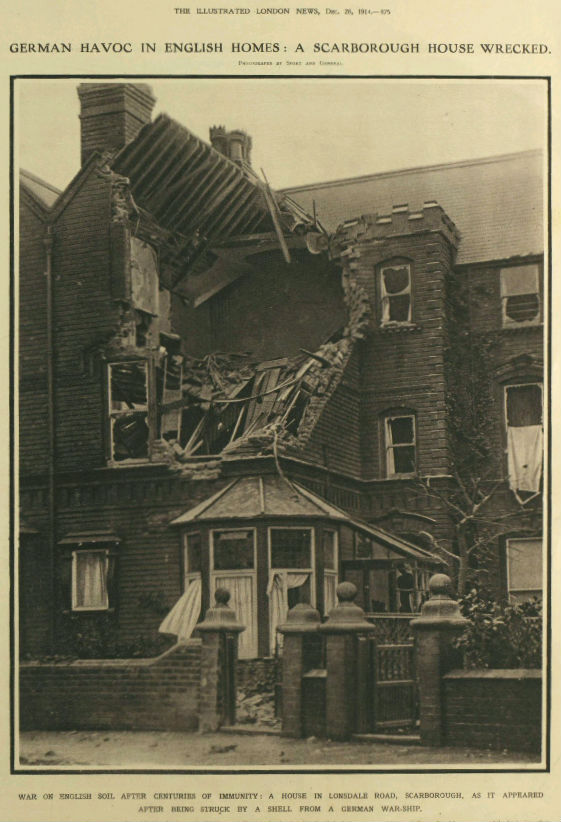
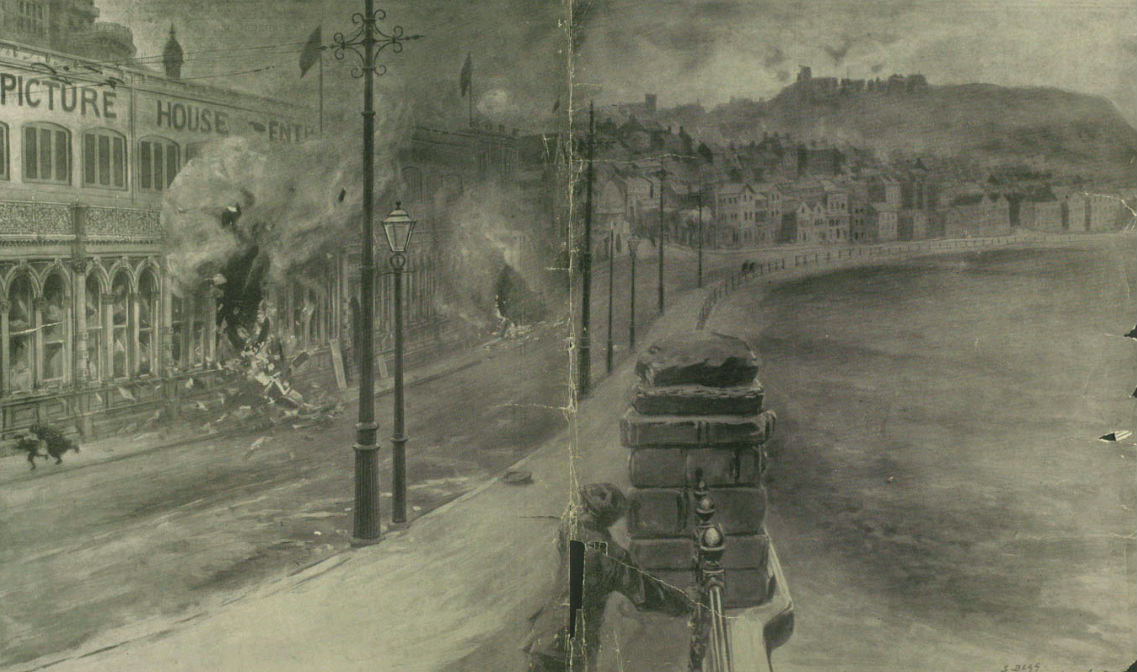
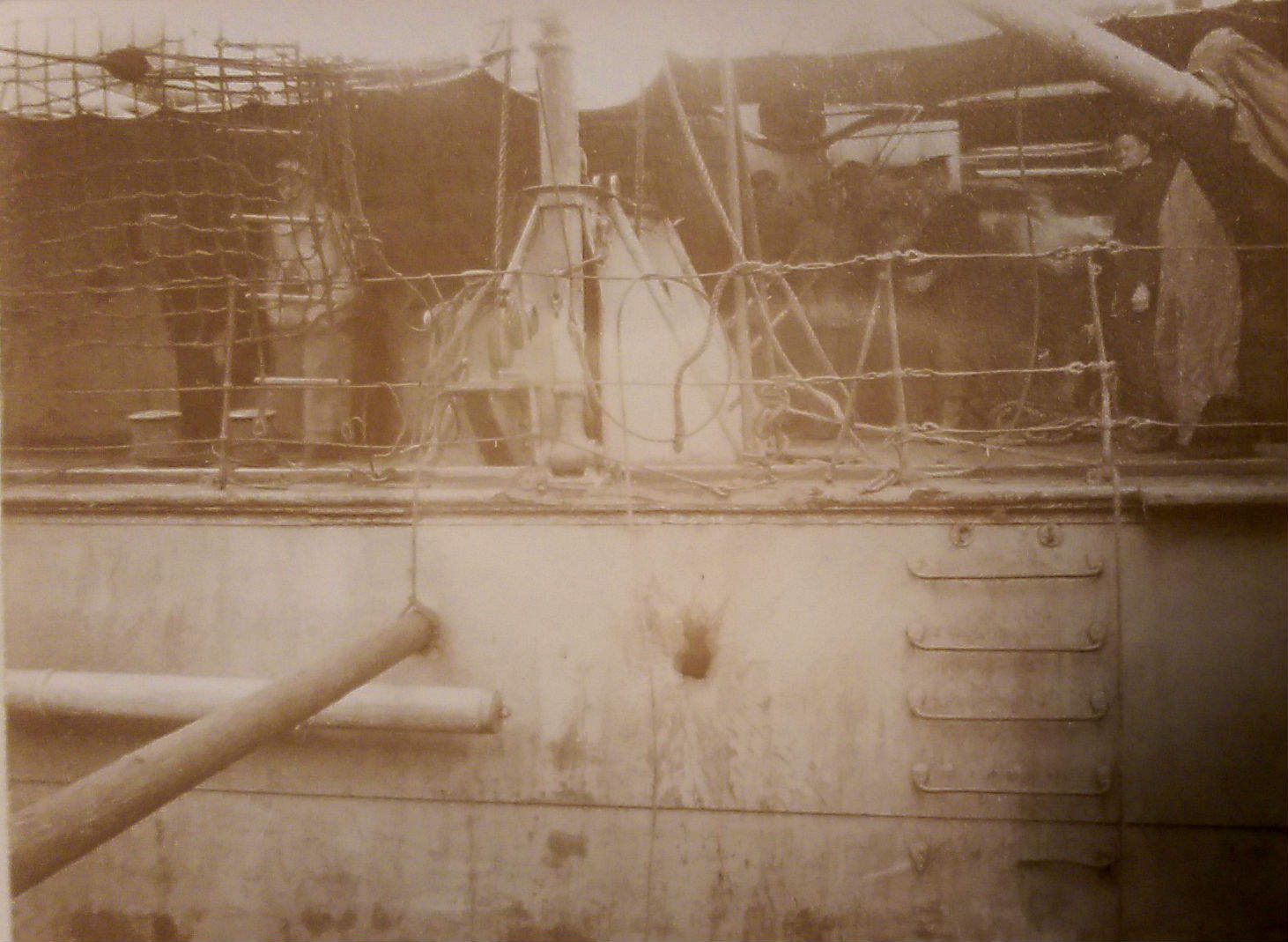
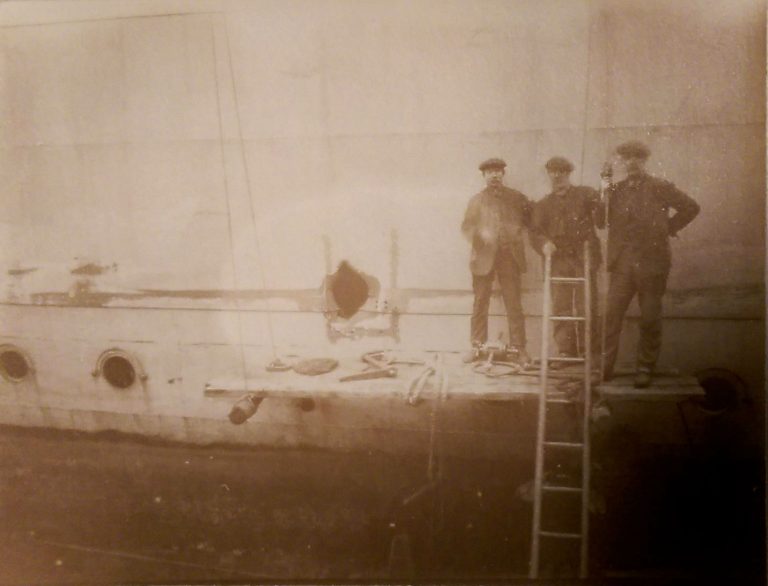
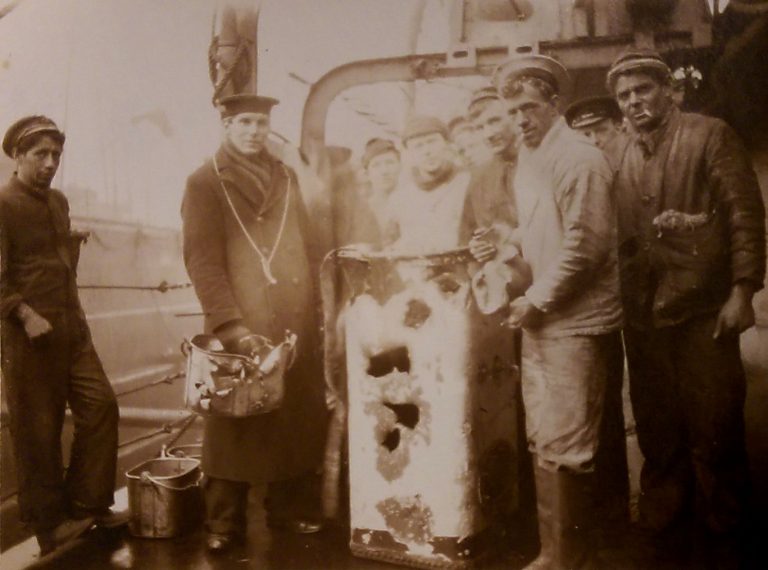
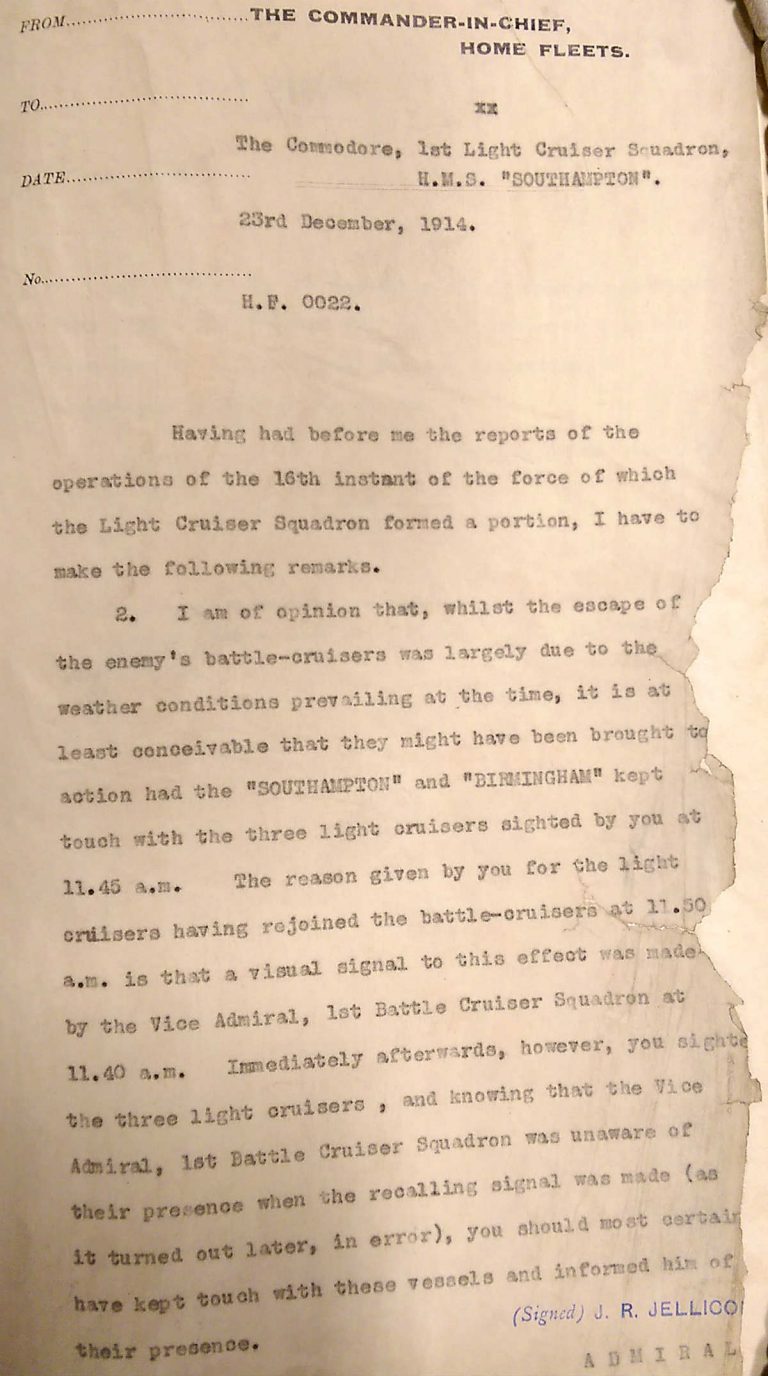
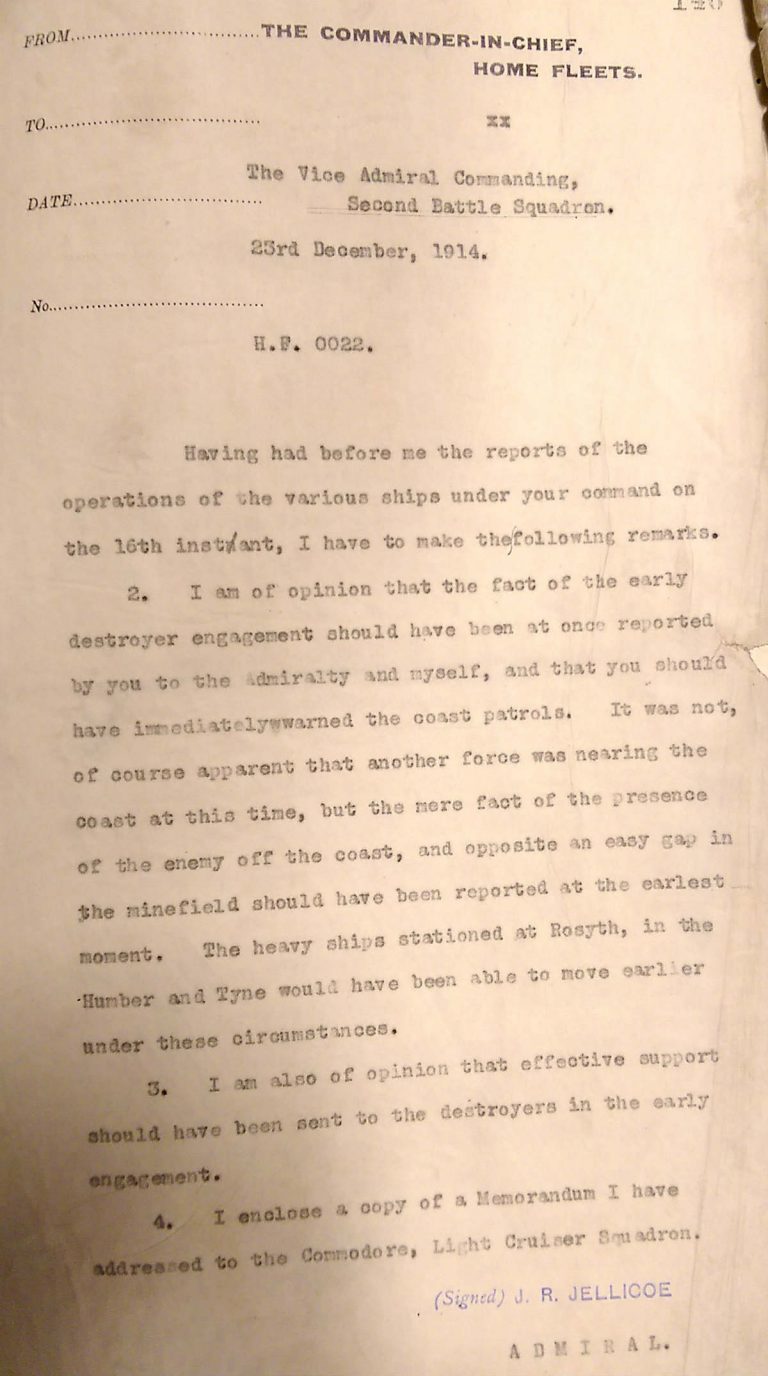
[…] front. The Government undertakes to provide relief from the Imperial funds for persons and property damaged in the East Coast […]
A fascinating conclusion! It’s wonderful to think that even destruction might be a rallying call to the British public. Thank you for this lovely insight!